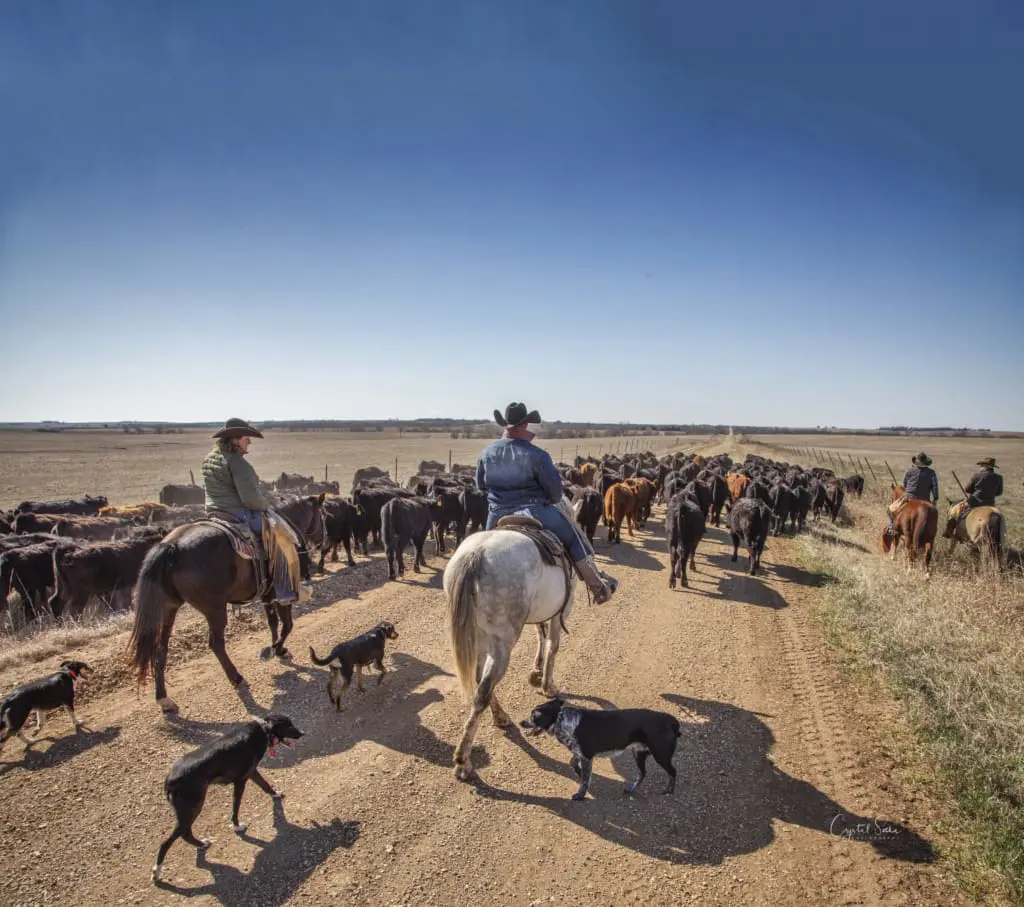Doing Right by the Land
The Hoys are intentional about applying their knowledge to the management of their sheep, longhorn cattle and land. This commitment is driven by their passion for lifelong learning.
“We’re doing continuing education programs all the time,” said Gwen. “We read constantly trying to get better and better.”
Iconic Country
The Flying W lies in the middle of old-growth tallgrass prairie. The Hoys consider themselves fortunate to be doing what they love most in an iconic part of the world.
As part of their management practices, they prefer to do all their ranch work on horseback. “In this country, you’d go broke in a hurry trying to use feed trucks and four-wheelers,” said Josh. “My grandfather always said that broke horses make money and broke equipment costs money.”
“There’s only about 2 to 4% of old-growth tallgrass prairie left, and we’re right in the middle of it,” said Josh.
Embracing ‘The Chaos Factor’
They also try to work with nature as much as possible. “We call part of our management theory, ‘the chaos factor,’” said Josh. “Nature has chaos throughout— and if you try to do the same thing year after year, nature doesn’t like that. We try mixing things up all the time, like running cows on some of the grass at certain times and yearlings at other times.”
For the Hoys, embracing ‘the chaos factor’ also means not being overly prescriptive.
Rebooting Herd Instincts
The Hoys use stockmanship to revive the herd instincts of their cattle and sheep, adopting practices such as instinctive migratory grazing.
“It’s a big endeavor, but we try to implement as much as possible with the tools we have,” Gwen said. “Our goal is to eventually move our cows back and forth between two separate properties 24 miles apart.”
Part of this process involves encouraging their animals to browse more. “You need grazers and you need browsers,” said Josh.
Doing Right by the Land
Their management practices are shaped by their commitment to the land itself. Rather than focus on getting as much off the land as possible, “we take some of our grass and let it rest during the growing season,” said Josh. “The way we see it, it’s just harvesting at different times, where you may not be getting the same gains immediately because it’s a different kind of harvesting.”
The Flying W has conservation easements—voluntary, legal agreements that permanently limit uses of the land to protect its conservation values—on all owned and managed land, allowing the Hoys to establish 4,000 restored acres of native prairie or managed pasture.
“We’re working with organizations like The Nature Conservancy and the Ranchland Trust of Kansas,” said Josh. “They’re really working hard to make easements flexible and functional for the families involved—and that’s important because you have to plan for those next generations coming down the road. If you don’t do that, you don’t have anything.”
Paying Lifelong Learnings Forward
As lifelong learners, the Hoys are passionate about sharing their experiences. Before the pandemic, agritourism played a role in their operation, with the Hoys welcoming a steady stream of guests interested in sustainable ranching. They’re now considering other ways, including an internship program, to spread the word about grassland stewardship and sustainable ranching.
“There are ways we could make much more money by being more extractive of the land. But we’re still building wealth—in our soil health, in our ecological health and in our wildlife,” Josh said.
The Hoys embrace “the chaos” of working with rather than against nature to manage the grasslands that have sustained four generations of ranchers.
This article was originally published by Frontier Farm Credit.



